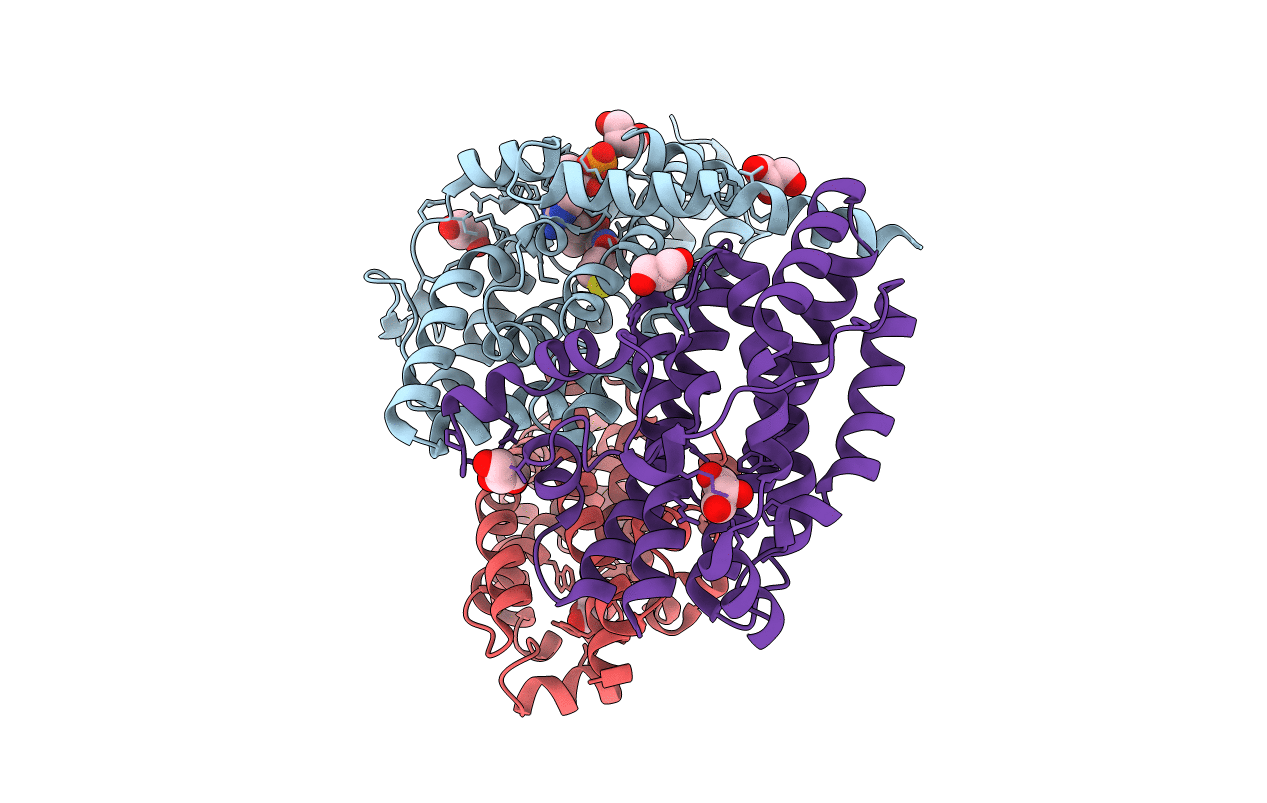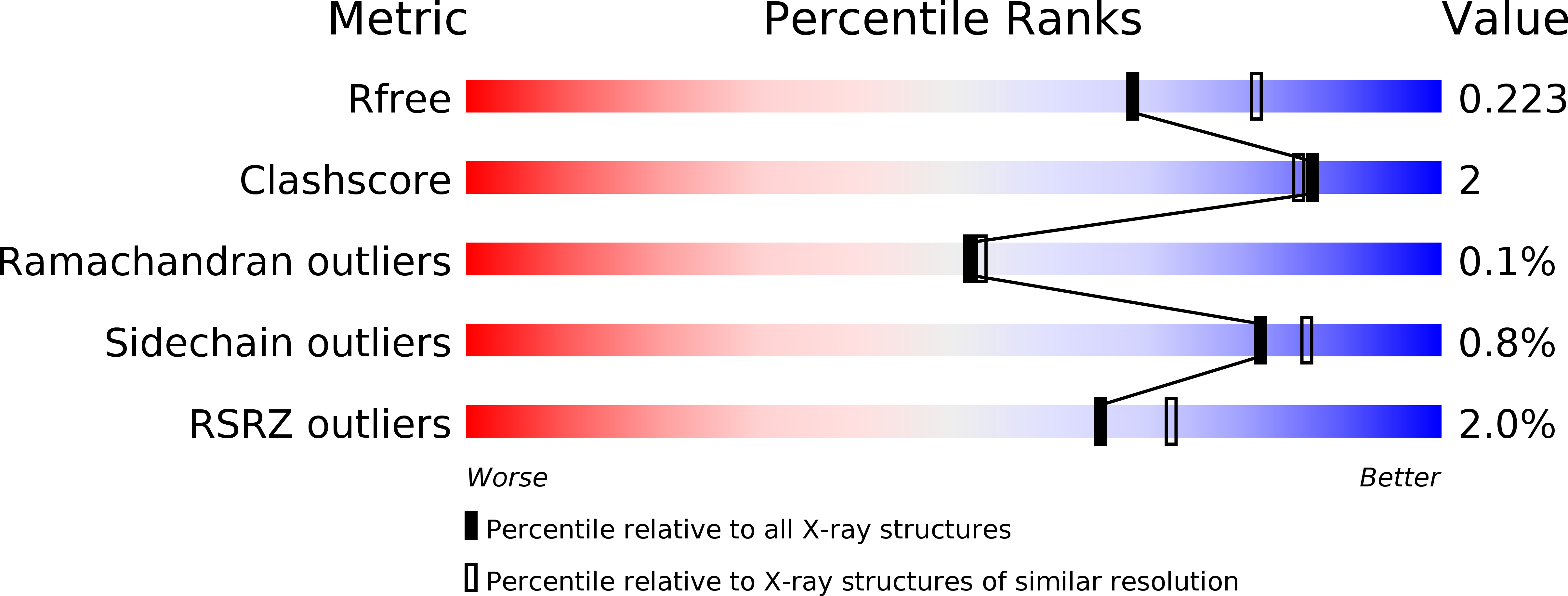
Deposition Date
2010-12-07
Release Date
2011-01-19
Last Version Date
2023-09-06
Entry Detail
PDB ID:
3PVY
Keywords:
Title:
The Phenylacetyl-CoA monooxygenase PaaAC subcomplex with coenzyme A
Biological Source:
Source Organism:
Escherichia coli (Taxon ID: 511145)
Host Organism:
Method Details:
Experimental Method:
Resolution:
2.15 Å
R-Value Free:
0.22
R-Value Work:
0.18
R-Value Observed:
0.19
Space Group:
P 41 21 2


